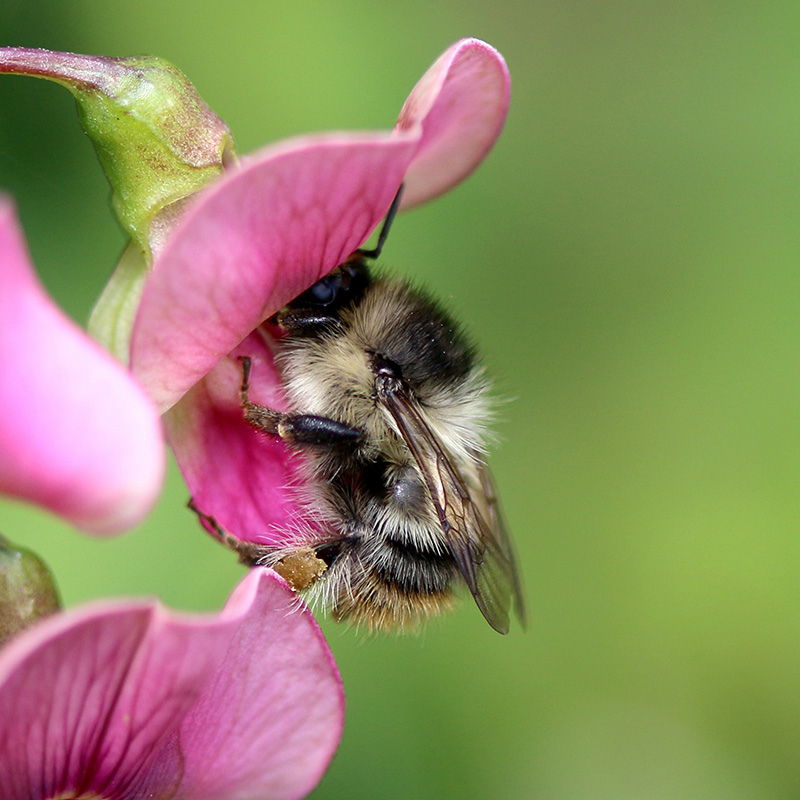Bombus sylvarum
The characteristic high-pitched (shrill) buzz of this bee species is a useful diagnostic tool for identification. This rare species of bee is only known from a handful of sites in South Wales and southern England, and are threatened mainly due to a loss of flower-rich grasslands.
These bees are straw-coloured with a dull reddish-orange tail, a black band between the wings, and black stripes on the abdomen. They are one of the smallest bumblebees in Britain, queens are around 17mm long, whereas the workers and males are much smaller (c. 12mm).
Nests are usually made in thick tussocky grassland vegetation near the ground. Shrill carder bees emerge late in the season, queens don’t appear until May, and worker bees are seen from mid-June to September. Males and daughter queens emerge late July to September. The new queens mate, then hibernate and then emerge the following May to start the cycle again.
What they eat
The shrill carder bee is a long-tongued bumblebee and has a strong association with long tubular flowers. They eat nectar and pollen taken from plants such as bird’s foot trefoil, red clover, hedge woundwort, black horehound and red bartsia.
Where and when to see them
Shrill carder bees can be seen between May and September.
These bees favour species rich grassland, grazing marshland, coastal dunes, and brownfield sites.
Use your ears, and listen out for their high-pitched buzz.

